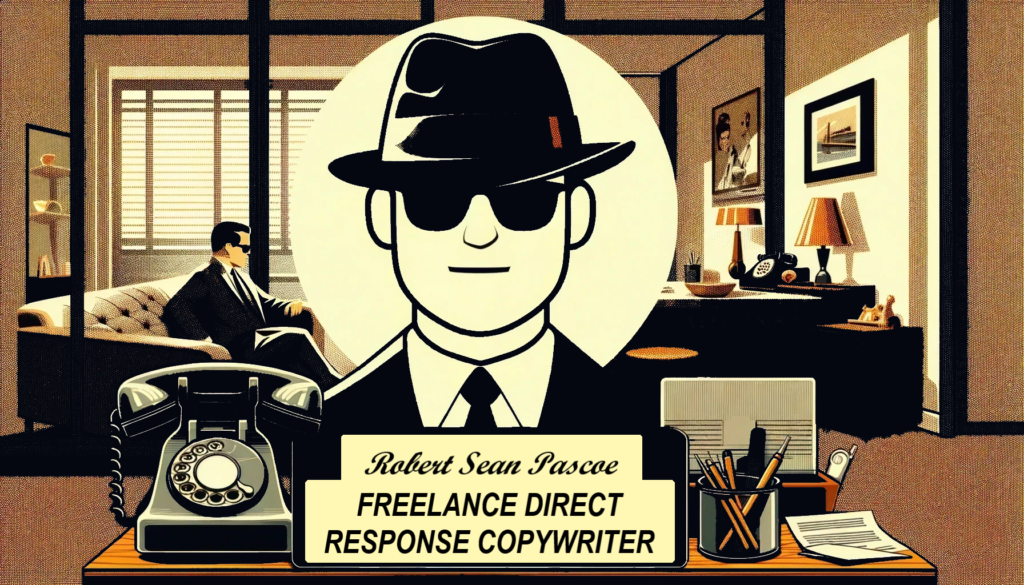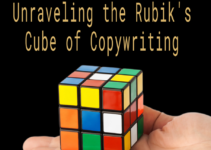Copywriting plays a huge part in the success (or failure) of all businesses. Why? It enables brands to convey their messages clearly and persuasively which leads to SALES and increased PROFITS.
In 2024, the importance of copywriting is more critical than ever as businesses compete for attention in an increasingly competitive marketplace.
Persuasive writing techniques in copywriting can significantly influence consumer behavior and drive conversions.
The Importance of Copywriting in 2024
In today’s fast-paced world, every word counts. Businesses must do whatever it takes to cut through the noise to capture and retain their audience’s attendance.
This is where copywriting comes into play.
Effective Communication: Copywriting ensures that your message is not only heard but also understood. Clear, concise, and compelling content can make all the difference in how your brand is perceived.
Digital Marketplace Competition: With the surge of online businesses, standing out has never been more challenging. Effective copywriting helps brands distinguish themselves from competitors by highlighting unique selling points.
Influence on Consumer Behavior
Persuasive writing techniques are the backbone of successful copywriting. These methods tap into the psychology of consumers, guiding them towards a desired action.
Emotional Triggers: By understanding what motivates your audience, you can craft messages that resonate on a deeper level. Emotional triggers such as fear, happiness, or nostalgia can be powerful tools in driving engagement.
Clear Calls-to-Action (CTAs): Strong CTAs guide readers on what steps to take next, whether it’s making a purchase or signing up for a newsletter.
The Evolving Landscape of Copywriting
The landscape of copywriting is continually evolving. Staying updated with trends and best practices is essential for mastering this skill in 2024.
AI and Automation: Tools like AI-driven content generators are becoming increasingly popular. While they can assist with generating ideas and basic texts, human creativity and emotional intelligence remain irreplaceable.
SEO Integration: SEO copywriting continues to be vital. Understanding how to weave keywords naturally into engaging content can enhance visibility and drive traffic.
Key Trends to Watch
- Personalization: Tailoring content to individual preferences will become even more critical.
- Interactive Content: Utilizing formats like quizzes or polls to engage users actively.
- Video Scripts: As video content rises in popularity, mastering scriptwriting becomes crucial.
Mastering copywriting in 2024 isn’t just about writing well—it’s about understanding your audience, leveraging new technologies, and staying ahead of industry trends.
In this article, I’m going to reveal what it takes to be successful with copywriting in 2024 and beyond.
WHAT IS COPYWRITING???
Copywriting is both an art and a science. It’s the art of persuasive content that moves people to take specific actions—buying a product, signing up for a newsletter, or engaging with your brand.
The Art of Persuasion
Copywriting relies on knowing your audience. Understanding their needs, desires, and pain points. Crafting messages that resonate deeply with them.
“The best marketing doesn’t feel like marketing.” – Tom Fishburne
Key Elements of Persuasive Copy
Emotional Connection: Good copy doesn’t just inform; it connects emotionally. It makes the reader feel understood.
Clarity and Conciseness: Every word counts. Your message must be clear and to the point.
The Science Behind It
Successful copywriting isn’t just about being a good writer. It’s about strategy and understanding human psychology.
Key Principles of Effective Copy
AIDA Framework: A classic model—Attention, Interest, Desire, Action.
Customer Research: Knowing who you’re talking to is half the battle.
The Copywriting Industry
The industry spans multiple sectors:
- Advertising
- Marketing
- Digital Media
Skilled writers create compelling messages that help brands stand out in a crowded marketplace.
Advertising
In advertising, copywriting is about crafting slogans, headlines, and ad copy that grabs attention quickly.
- TV and Radio Ads: Short, punchy lines.
- Print Ads: Visually appealing with strong headlines.
Marketing
In marketing, it’s about telling a story—building a narrative around a brand or product.
- Email Campaigns: Personalized messages.
- Sales Pages: Long-form content that builds desire.
Digital Media
Here, SEO plays a big role. Optimizing content so that it ranks well on search engines while still being engaging for readers.
- Blog Posts: Informative yet persuasive.
- Social Media Posts: Quick hits that drive engagement.
Effective Copywriting Drives Engagement
Good copy doesn’t just sit there; it moves people to act. Whether it’s clicking a link, filling out a form, or making a purchase.
Emotional Resonance – Connecting on an emotional level makes your message memorable. People are more likely to engage when they feel something.
Clarity of Message – Clear messaging helps in avoiding confusion. When readers know exactly what you want them to do, they’re more likely to do it.
THE ROLE OF A COPYWRITER
Key Responsibilities
A copywriter’s job description encompasses various tasks, each pivotal in crafting compelling content that drives action. Here are some core duties:
- Research: Understanding the target audience, product, and market trends is crucial. This involves thorough research to create relevant and captivating content.
- Content Creation: Writing clear, concise, and persuasive copy for different platforms—websites, emails, social media posts, advertisements.
- Editing and Proofreading: Ensuring accuracy and clarity in the content by editing and proofreading drafts.
- Collaboration: Working with marketing teams, designers, and other stakeholders to align the copy with broader marketing strategies.
- SEO Optimization: Crafting content optimized for search engines to enhance visibility and reach.
Essential Traits for Success
Success in copywriting hinges on a blend of skills and personal traits:
- Effective Communication: A good copywriter must convey ideas clearly and persuasively. Mastery of language nuances is essential.
- Creativity: The ability to think outside the box helps in crafting unique messages that stand out in a crowded marketplace.
- Adaptability: Copywriters often juggle multiple projects across different industries. Adaptability ensures they can tailor their voice to varied audiences.
- Attention to Detail: Precision is key. Small errors can undermine credibility; hence meticulousness is vital.
- Empathy: Understanding and resonating with the audience’s emotions enable copywriters to connect on a deeper level, driving engagement.
- Time Management: Meeting deadlines without compromising quality requires excellent organizational skills.
These responsibilities and traits define what it takes to excel as a copywriter. The role demands a balance of creative flair and strategic thinking.
EXPLORING DIFFERENT TYPES OF COPYWRITING
Copywriting isn’t one-size-fits-all. Different contexts require different approaches. Understanding the various types of copywriting helps you tailor your strategies to achieve specific goals. Here are some key types of copywriting:
1. Direct Response Copywriting
Direct response copywriting is all about immediate action. The goal is to provoke an instant response from the reader, whether it’s making a purchase, subscribing to a newsletter, or clicking a link.
Sales Letters: A classic example of direct response copywriting. These are long-form letters that highlight benefits, address pain points, and end with a clear call-to-action (CTA).
Email Campaigns: Emails designed to elicit quick responses like opening an account or attending a webinar. Subject lines need to be compelling, and the content must be concise yet persuasive.
“Click here now,” “Buy before midnight,” “Get your free trial today”—such phrases are common in direct response copy.
2. Branding Copywriting
Branding copywriting focuses on creating a strong brand identity. This type involves storytelling and emotional appeal to foster a deeper connection with the audience.
Taglines and Slogans: Short phrases that encapsulate the essence of a brand. Think Nike’s “Just Do It” or Apple’s “Think Different.”
Brand Stories: Narratives that humanize the brand, often shared on websites and social media platforms. They aim to build an emotional bond with consumers.
Storytelling isn’t just about sharing facts; it’s about creating an experience that resonates emotionally with your audience.
3. SEO Copywriting
SEO (Search Engine Optimization) copywriting aims to make content more visible in search engine results. This form of copywriting blends traditional writing skills with technical SEO knowledge.
Blog Posts: Articles optimized for specific keywords and phrases to attract organic traffic from search engines.
Product Descriptions: Detailed descriptions filled with relevant keywords to make products easily discoverable online.
Effective SEO copy balances keyword usage without sacrificing readability and engagement.
4. Technical Copywriting
Technical copywriting breaks down complex information into easy-to-understand language. It’s essential for industries like technology, engineering, and healthcare.
User Manuals: Step-by-step guides explaining how to use a product or service.
White Papers: In-depth reports that provide detailed information on technical topics, often used in B2B marketing.
Clarity is paramount in technical copywriting; jargon should be minimized unless it’s widely understood by the target audience.
5. Social Media Copywriting
Social media platforms each have their unique styles and requirements. Social media copywriters must adapt their tone and format accordingly.
Tweets and Facebook Posts: Short, engaging messages tailored for quick consumption.
Instagram Captions: Often paired with visuals, these captions need to be snappy and relatable.
Effective social media copy sparks conversations and boosts engagement through shares, likes, and comments.
6. Ad Copywriting
Ad copywriters craft messages for various advertising formats—digital ads, print ads, TV commercials, etc.—aiming for maximum impact within limited space or time constraints.
Google Ads: Short text ads that appear in search results.
Banner Ads: Visual ads displayed on websites; they require concise yet compelling text to attract clicks.
Every word counts in ad copy; it’s about making the most significant impact in the fewest words possible.
Understanding these types of copywriting allows you to select the right approach for your specific needs. Tailor your strategies based on your goals—be it instant responses, brand-building, SEO optimization, or clear technical communication—to excel in the competitive landscape of 2024.
WHY COPYWRITING MATTERS
Effective copywriting captures attention and engages the audience, making your message memorable.
In a world saturated with information, attention is a scarce commodity. Effective communication through copywriting ensures your message stands out amidst the noise. For instance, consider a compelling headline that grabs your reader’s interest immediately. “Unlock Your Potential: Discover the Secret to Effortless Success” is far more engaging than a generic statement like “Learn How to Succeed.”
Well-crafted copy can drive conversions by clearly communicating the benefits of a product or service.
Customers want to know what’s in it for them. Instead of listing features, highlight how those features translate into tangible benefits. Take this example:
Feature: “Our software has a user-friendly interface.”
Benefit: “Save time and reduce frustration with our easy-to-navigate software, allowing you to focus on what truly matters.”
By emphasizing benefits, you make it easier for potential customers to see the value in what you’re offering.
Copywriting fosters trust and credibility, establishing a strong connection between the brand and its customers.
Trust is the bedrock of any successful business relationship. Authenticity in your messaging helps build this trust. Share real testimonials, case studies, and success stories that validate your claims. When customers see others benefiting from your product or service, they are more likely to believe in its value.
How good copy can enhance marketing efforts and drive results
Good copywriting doesn’t exist in isolation; it’s an integral part of your broader marketing strategy. Whether it’s social media posts, email newsletters, or landing pages, consistent messaging across all channels strengthens your brand identity.
- Email Campaigns: Personalized and engaging emails can lead to higher open rates and click-through rates.
- Social Media: Catchy captions and well-thought-out posts increase engagement and shares.
- Landing Pages: Clear and persuasive copy drives conversions by guiding visitors towards taking specific actions.
The synergy created by effective copy across multiple platforms amplifies your marketing impact.
The impact of persuasive writing on conversion rates and customer engagement
Persuasive writing techniques such as storytelling, emotional triggers, and clear calls-to-action (CTAs) significantly boost conversion rates. Consider this CTA:
“Start Your Free Trial Today – Experience the Difference!”
The sense of urgency combined with an enticing offer propels readers towards immediate action.
Studies show that emotionally charged content tends to be more memorable and shareable. A story about how a product changed someone’s life can resonate deeply with potential customers, driving both engagement and conversions.
Key Takeaways
- Engagement: Effective copy captures attention and keeps readers hooked.
- Conversions: Highlighting benefits rather than features drives consumer action.
- Trust: Authentic messages foster credibility and strengthen connections.
- Marketing Synergy: Consistent messaging enhances overall marketing efforts.
- Persuasion: Emotional triggers and strong CTAs boost conversion rates.
Understanding these elements underscores why mastering copywriting is crucial for any business aiming to thrive in today’s competitive landscape.
MASTERING THE ART OF PERSUASIVE WRITING
Effective Copywriting Tips and Techniques
Utilize Emotional Triggers
Emotional triggers are powerful tools in the arsenal of effective copywriting. They tap into the reader’s feelings, creating a connection that goes beyond mere words. By identifying and leveraging these triggers, you can influence behavior and drive action. Examples include:
- Fear of Missing Out (FOMO): Highlight limited-time offers or exclusive deals.
- Curiosity: Pose intriguing questions or present unexpected facts.
- Desire: Showcase aspirational benefits that your product or service can deliver.
Consider an email campaign for a fitness program. Using emotional triggers like “Imagine yourself achieving your dream body in just 12 weeks” can stir desire and motivate readers to sign up.
Craft Compelling Headlines
The headline is your first impression. It must capture attention immediately and entice readers to dive deeper. An effective headline is specific, emotionally charged, and promises a benefit.
Examples of compelling headlines:
“Discover How You Can Save $500 on Your Next Vacation!”
“Unlock the Secret to Effortless Weight Loss”
These headlines draw readers in with clear benefits and emotional appeal. Remember, a strong headline sets the stage for the rest of your content.
Incorporate Storytelling Techniques
Storytelling transforms dry information into engaging narratives that resonate with readers. It makes your message relatable and memorable by weaving facts into a compelling story arc.
Key storytelling elements:
- Characters: Introduce relatable characters that embody your target audience’s challenges and aspirations.
- Conflict: Present obstacles or problems that need solutions.
- Resolution: Show how your product or service provides the solution.
An example could be a case study where you narrate how a small business owner overcame financial struggles using your accounting software. This approach not only informs but also engages readers emotionally.
Importance of Clear Calls-to-Action (CTAs)
A clear call-to-action (CTA) is crucial for guiding readers towards the desired outcome. Whether it’s making a purchase, signing up for a newsletter, or downloading a resource, your CTA should be straightforward and compelling.
Tips for crafting effective CTAs:
- Be Specific: Use precise instructions like “Download Your Free Guide Now” instead of vague phrases.
- Create Urgency: Words like “Now,” “Today,” or “Limited Time” can prompt immediate action.
- Highlight Benefits: Explain what the reader will gain by following through with the CTA.
For instance, “Start Your Free Trial Today – Experience Premium Features at No Cost!” combines specificity, urgency, and clear benefits to drive action.
By mastering these persuasive writing techniques, you’ll elevate your copywriting skills significantly. From utilizing emotional triggers to crafting compelling headlines and clear CTAs, these strategies ensure your messages don’t just inform—they captivate and convert.
DEBUNKING MYTHS AROUND COPYWRITING
Common Misconceptions About Copywriting
Copywriting is not just about writing. It’s about understanding the audience and crafting messages that resonate with them. Successful copywriters dive deep into audience research, uncovering desires, pain points, and motivations. This knowledge allows them to tailor their content precisely, creating a powerful connection between the brand and its potential customers.
It’s not limited to advertising. Many believe that copywriting is confined to catchy slogans and ad campaigns. In reality, it’s a vital component of:
- Content Marketing: Crafting blog posts, articles, and eBooks that provide value and drive engagement.
- Social Media: Writing posts that capture attention in crowded feeds and encourage interactions.
- Brand Storytelling: Developing narratives that define a brand’s identity and foster loyalty.
Not everyone can write effective copy. The misconception that anyone can write effective copy overlooks the skill, strategy, and deep understanding of human psychology required. Great copywriters don’t just jot down words. They:
- Conduct Thorough Research: Understanding the product, market, competitors, and target audience.
- Utilize Proven Strategies: Employing frameworks like AIDA (Attention, Interest, Desire, Action) to structure their messaging.
- Craft Compelling Narratives: Using storytelling techniques to make content relatable and memorable.
The Skill Behind Effective Copywriting
Effective communication skills are paramount. A copywriter must convey complex ideas simply and persuasively, ensuring the message is clear and engaging. Creativity plays a crucial role too. Crafting unique angles and innovative approaches keeps the content fresh and compelling.
The art of persuasion hinges on emotional triggers. Understanding what drives people to act—whether it’s fear of missing out (FOMO), desire for gain, or need for security—enables copywriters to create messages that move people.
The Psychology of Persuasion
Understanding human psychology is at the heart of effective copywriting:
- Emotional Appeals: Crafting messages that evoke emotions such as happiness, trust, or urgency.
- Social Proof: Leveraging testimonials and case studies to build credibility.
- Scarcity & Urgency: Highlighting limited availability or time-sensitive offers to prompt immediate action.
Beyond Words: Strategy & Structure
Copywriting isn’t just about stringing words together; it’s about strategic structuring:
- Headlines That Hook: Capturing attention instantly with compelling headlines.
- Clear Calls-to-Action (CTAs): Guiding readers towards desired actions with well-crafted CTAs.
- Formatting for Readability: Utilizing subheadings, bullet points, and short paragraphs to make content skimmable.
The Value of Specialized Skills
A professional copywriter brings specialized skills that elevate content quality:
- SEO Optimization: Ensuring content ranks well in search engines without sacrificing readability.
- Technical Writing: Explaining complex information clearly for industries like tech or healthcare.
The evolving landscape of digital marketing amplifies the need for skilled copywriters who can navigate these nuances effectively. By debunking these myths around copywriting, businesses can recognize its true value in driving engagement and conversions across various platforms.
CONCLUSION
Mastering Copywriting in 2024: A Business Imperative
Mastering copywriting in 2024 isn’t just a goal—it’s a necessity. As businesses vie for attention in an oversaturated digital landscape, the ability to craft compelling, persuasive content stands out as a decisive advantage. Effective copywriting can make your brand’s voice heard amidst the noise, driving engagement and conversions.
Why The Smartest Move Many Businesses Can Make is to Hire a Professional Copywriter
Hiring a professional copywriter can be the smartest move many businesses make. A seasoned copywriter brings more than just writing skills to the table. They offer:
- Expertise in Audience Understanding: A professional delves deep into understanding your target audience, crafting messages that truly resonate.
- High-Quality Content: With polished grammar, strategic structuring, and persuasive techniques, you get content that stands out.
- Time Efficiency: Free up your schedule by entrusting writing tasks to someone whose primary focus is creating compelling content.
- Innovative Strategies: Experienced copywriters are well-versed in proven frameworks like AIDA and know how to apply them effectively.
Advantages of Hiring an Experienced Freelance Copywriter
When you hire an experienced freelance copywriter like Robert Sean Pascoe, you tap into a wealth of advantages:
- Tailored Messaging: I specialize in tailoring your message to align with your brand’s voice and audience needs.
- Versatility Across Formats: Whether it’s for digital marketing, SEO content, or technical writing, I adapt my style to suit various formats seamlessly.
- Emotional Connection: My expertise lies in creating content that not only informs but also connects emotionally with your audience.
- Proven Track Record: With years of experience across different industries, I bring real-world success stories to inform my strategies.
It’s Easy to Get a FREE No Obligation Consultation with Me (Robert Sean Pascoe)
Getting started is simple. It’s easy to get a FREE no-obligation consultation with me. This initial session will help identify your specific needs and outline how my services can elevate your brand’s messaging.
Contact me today for your FREE No Obligation Copywriting Consultation. Discover how professional copywriting can drive your business forward and ensure your message cuts through the clutter in 2024.
ABOUT ROBERT SEAN PASCOE
Robert Sean Pascoe is a direct response copywriter and marketing strategist who works with entrepreneurs worldwide to create advertising and marketing campaigns that MAXIMIZE their profits.
He LOVES Rock N Roll, pro wrestling, Star Wars and pretty much ANYTHING 1980’s.
With 7 years of freelance copywriting experience and a lifetime in sales, Robert knows how to use the power of words to sell virtually anything to anyone, especially if the market has been properly defined (and you BETTER have that right!).
Robert enjoys primarily working with small business owners to sell more of their products and services through the power of direct response advertising and marketing.
He has written sales copy for companies in such diverse niches as Weight Loss Supplements, Skin Care, Male Enhancement, Local Marketing Agencies, Live Event Seminars, Software Developers, Insurance Agencies, Real Estate Brokerages, Marketing Consultants, and many more.
Additional Resources for Copywriting Knowledge










